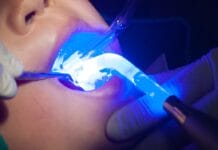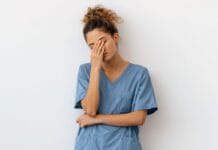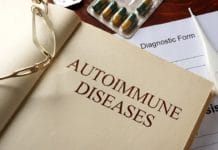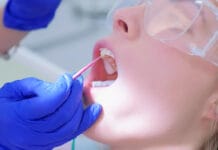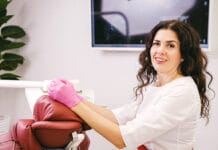Editor’s Note: Information about COVID-19 is changing on a daily, sometimes hourly, basis. We have made every attempt to ensure this article is up-to-date at the time of original article publication (July 2, 2020), but with the rapid changes occurring, some information may have changed since publication. Please visit coronavirus.
Most dental professionals are back to work sporting new PPE and maybe a little anxiety to boot. Clinical treatment during a pandemic has led to a spectrum of emotions, ranging from being frightened to loving the opportunity to be back to a more normal way of life.
No matter where you fall on that spectrum of emotions, it is important to stay informed and be aware that there is always a possibility you may come in contact with someone who is positive for COVID-19. I am not implying it will happen in the dental setting, as more social gatherings begin to occur, but the possibilities are endless as to where you may encounter COVID-19.
I have seen multiple reports of dental professionals testing positive, followed by an explanation of the protocol followed by their office. Some have been impressive, while others leave me a little concerned for humanity. The guidance for possible exposure and positive cases of COVID-19 is a little unclear. No one really wants to be responsible for issuing guidance on this topic. It is quite frustrating not only for practice owners but also for employees.
I hope to provide some clarification and guidance in this article. It would be quite an undertaking to go through each state health department to address the differences in the guidance for individual states, as they will differ depending on risk level. However, I plan to provide information offered from the American Dental Association (ADA), Centers for Disease Control and Prevention (CDC), and the Occupational Safety and Health Administration (OSHA) to give some guidance while waiting for specific guidelines from your state health department.
Quarantine for 14 Days
Ideally, patients infected with COVID-19 would not come in for routine dental work. However, the nature of this virus complicates matters. The number of asymptomatic and pre-symptomatic individuals with COVID-19 is concerning since these individuals would present as healthy patients upon screening.
The true percentage of individuals who are asymptomatic carriers is quite difficult to determine. However, the CDC estimates that number to be 35%. Furthermore, the infectiousness of asymptomatic patients as compared to symptomatic patients is 100%. The percentage of transmission occurring prior to symptom onset is 40%. Due to these complicated parameters, dental professionals should treat every patient as if they were infectious, regardless of symptoms.1
To support the previous statement, I would like to quote OSHA’s work tasks associated risk level, which states, “performing aerosol-generating procedures on well patients is considered high risk. It is considered very high risk to perform aerosol-generating procedures on suspected or confirmed COVID-19 positive patients.”2
If you suspect you have been in contact with someone that is COVID-19 positive or you begin to have symptoms, you should get tested and quarantine as soon as possible. The CDC recommends these employees be excluded from work and quarantined for 14 days, even if their baseline test results are negative.3,4
The CDC does offer another option that could apply to dental settings, the recommendation to return to work before 14 days includes serial testing. This is meant more so for asymptomatic individuals; it requires baseline testing and testing every three days. Employees who remain asymptomatic and have negative test results at baseline and day three may return to work but must continue to be tested every three days until there are no new cases in the workplace.3
The CDC encourages businesses to maintain flexible policies for sick leave during the pandemic. For businesses that do not already offer sick leave, the CDC encourages employers to consider drafting “non-punitive sick leave policy” during the pandemic.3
Seek Medical Treatment
Symptoms can be mild to severe and may appear as early as two days after exposure or as late as 14 days after exposure. Milder symptoms include loss of taste and smell, fever, cough, headache, fatigue, shortness of breath, sore throat, congestion or runny nose, diarrhea, and vomiting. This list may not include all symptoms of COVID-19 as we are learning more about this disease, more symptoms may be associated with the disease.
More serious symptoms that require medical treatment include trouble breathing, persistent pain or pressure in the chest, confusion, inability to wake or stay awake, and bluish lips or face.
If you begin experiencing any of these symptoms, please seek medical treatment as soon as possible; this is considered a medical emergency. It is advised to call 911 or call the medical facility where you will be seeking care to alert them of your upcoming arrival. This step allows the facility to prepare and prevent exposure to other patients who may be in the emergency room at the time of your arrival. This guidance for medical emergency, as it applies to COVID-19, is not only for staff/co-workers; it also applies in the case of a patient exhibiting these symptoms.4,5
Contact Tracing
As soon as a staff member/co-worker has a positive COVID-19 test, it is important to immediately begin determining who this individual may have been in contact with just prior to their diagnosis. The ADA recommends notifying the entire staff and asking the following questions:
- When were they last in contact with the individual diagnosed with COVID-19?
- What was the date of the last contact?
- How long was the contact?
- What was the approximate distance of the contact?
- Are they experiencing any symptoms?
Get as many details as possible to better determine other staff members’ risk level. As per OSHA, COVID-19 is a recordable disease, and employers are responsible for recording cases of COVID-19. The requirements for determining the need to report such cases are as follows:
- The case is a confirmed case of COVID-19, as defined by the Centers for Disease Control and Prevention.
- The case is work-related as defined by 29 CFR 1904.5.
- The case involves one or more of the general recording criteria set forth in 29 CFR 1904.7.
For clarification, the CDC definition of a confirmed case of COVID-19 is “an individual with at least one respiratory specimen that tested positive for SARS-CoV-2, the virus that causes COVID-19.”6
Work-related cases under 29 CFR 1904.5 is defined as “an employer must consider an injury or illness to be work-related if an event or exposure in the work environment (as defined by 29 CFR 1904.5(b)(1)) either caused or contributed to the resulting condition or significantly aggravated a pre-existing injury or illness. Work-relatedness is presumed for injuries and illnesses resulting from events or exposures occurring in the work environment unless an exception in 29 CFR 1904.5(b)(2) specifically applies.” A chart with the exceptions can be found here.7
Criteria found in 29 CFR 1904.7 is stated as follows: “An employer must consider an injury or illness to meet the general recording criteria, and therefore to be recordable if it results in any of the following: death, days away from work, restricted work or transfer to another job, medical treatment beyond first aid, or loss of consciousness. An employer must also consider a case to meet the general recording criteria if it involves a significant injury or illness diagnosed by a physician or other licensed healthcare professional, even if it does not result in death, days away from work, restricted work or job transfer, medical treatment beyond first aid, or loss of consciousness.”8
OSHA has added a caveat to these guidelines that state, “Because of the difficulty with determining work-relatedness, OSHA is exercising enforcement discretion to assess employers’ efforts in making work-related determinations.” Additionally, employers with 10 or fewer employees and employers in certain low hazard industries have no recording obligation. This may apply to some small private practices in dentistry. The only reporting requirement for these employers is if the illness results in a fatality or in-patient hospitalization, amputation, or the loss of an eye.8 This does not mean that practices with 10 or fewer employees are at “low risk,” the risk level is assumed to be lower due to fewer people in the facility, however because of the production of aerosols dental practices remain at a higher risk than other occupations.
Further information on the evidence used to determine if a COVID-19 case is work-related can be found on the OSHA website here.
The ADA also encourages employers to keep unaffected staff abreast of the situation. This includes but is not limited to date of testing, when the results were received and what the results are, the progression of symptoms, any hospitalizations or improvements of co-workers or patients who have tested positive.4
HIPAA laws may seem like a barrier in sharing information amongst staff; however, the U.S. Department of Health and Human Services states in regard to the sharing of protected health information, “HIPAA Privacy Rule permits a covered entity to disclose the protected health information (PHI) of an individual who has been infected with, or exposed to, COVID-19, with law enforcement, paramedics, other first responders, and public health authorities”11 This includes notifying persons at risk of contracting or spreading COVID-19.12
Additionally, the HHS, Office of Civil Rights allows disclosure of personal health information to prevent a serious and imminent threat. This section of the guidance issued by the HHS states, “Health care providers may share patient information with anyone as necessary to prevent or lessen a serious and imminent threat to the health and safety of a person or the public – consistent with applicable law (such as state statutes, regulations, or case law) and the provider’s standards of ethical conduct.”12
Risk Assessment
In the ADA’s guidance for healthcare providers who have been exposed to a COVID-19 positive individual, it is recommended to do a risk assessment based on the CDC’s Interim U.S. Guidance for Risk Assessment and Public Health Management of Healthcare Personnel with Potential Exposure in a Healthcare Setting to Patients with Coronavirus Disease (COVID-19).4
Individuals are categorized in tiers to determine highest risk and need for immediate testing. Tier one constitutes the highest risk and highest priority for testing. This includes co-workers who were exposed to a worker or patient who tested positive for COVID-19. The timeline begins two days before the worker started showing symptoms or two days prior to specimen collection for asymptomatic workers.
Other determining factors include proximity and duration of contact with COVID-19 positive co-workers. Prolonged close contact and duration is defined by the CDC as within six feet for 15 minutes or more. This assessment also applies to patients who report positive tests within two days of being in the facility, with more specific language as it applies to patient interaction, the CDC’s guidance states: “Any duration of exposure should be considered prolonged if the exposure occurred during performance of an aerosol producing procedure.”3,9
Tier two is the second-highest risk and includes workers on the same shift but in different areas of the facility. This does not seem to apply to dental settings in general; the guidance is more directed to a hospital setting or possibly large clinical settings. Tier three applies to workers who share a common space such as a bathroom or breakroom yet may not necessarily encounter the worker who tested positive for COVID-19.9
Clean and Disinfect Environmental Surfaces
Once the patient or employee has been confirmed to have COVID-19, all areas the worker or patient frequented during their time in the facility should undergo proper environmental cleaning and disinfection before the area is returned to routine use, this may include areas that may not cleaned and disinfected routinely. For example, walls, windows, floors, and even the ceiling are areas to include when cleaning and disinfecting after an employee or patient has frequented to the facility that tested positive for COVID-19.
Again, the ADA defers to the CDC and suggests employers and employees refer to the CDC’s Interim Infection Prevention and Control Guidance for Dental Settings During the COVID-19 Response.
Proper cleaning and surface disinfecting per the CDC’s guidelines involve the use of cleaners and water to pre-clean the area before applying, and EPA registered hospital disinfectant for the appropriate contact time as per the manufacturer’s instructions. Management of laundry and eating utensils should be performed in accordance with routine procedures to ensure any items that were in contact with the worker or patient have been thoroughly cleaned and disinfected.4,10
Contact Patients
Upon discovering an employee or patient who is COVID-19 positive, the ADA recommends contacting all patients who may have had contact with the COVID-19 positive individual. When contacting patients, record any symptoms they may have, recommend they quarantine for 14 days, and contact their primary care physician for further guidance.4
I have seen reports of offices not notifying patients who were potentially exposed, and I find that quite troubling. Not only is this the ethical and moral thing to do, but it will also reduce community spread. No one wants their office to be associated with a possible case of COVID-19. However, I personally feel like the optics will be even worse when the dental office is determined to be the vector, and patients were not notified. There is a level of trust and transparency we should provide to our patients, especially during a pandemic of this magnitude.
Follow CDC and Local Health Department Recommendations
Finally, the ADA recommends all dental providers follow the recommendations of the CDC and their local health department. Each state will have its own guidance dependent on the level of community spread.4
Additionally, I would recommend having a written protocol posted for all staff members to see; this will help the entire team be on the same page. Knowing there is a protocol in place for possible exposure to employees and patients can significantly reduce anxiety and stress related to returning to clinical practice during the pandemic.
Our patients trust us, and I hope there is mutual trust amongst co-workers, keeping an open line of communication with a clear protocol will further strengthen that trust. I believe patients and employees alike will feel more secure knowing there is a protocol in place in the unfortunate event that someone is exposed to COVID-19 at the dental office.
Need CE? Check Out the Self-Study CE Courses from Today’s RDH!
Listen to the Today’s RDH Dental Hygiene Podcast Below:
References
- Centers for Disease Control and Prevention. Coronavirus 2019 (COVID-19). COVID-19 Pandemic Planning Scenarios. Retrieved from https://www.cdc.gov/coronavirus/2019-ncov/hcp/planning-scenarios.html.
- United States Department of Labor. Occupational Safety and Health Administration. Dentistry Workers and Employers. Retrieved from https://www.osha.gov/SLTC/covid-19/dentistry.html.
- Centers for Disease Control and Prevention. Testing Strategy for Coronavirus (COVID-19) in High-Density Critical Infrastructure Workplaces after a COVID-19 Case Is Identified. Retrieved from https://www.cdc.gov/coronavirus/2019-ncov/community/worker-safety-support/hd-testing.html.
- American Dental Association. What to do if Someone on Your Staff Tests Positive for COVID-19. Retrieved from https://success.ada.org/~/media/CPS/Files/COVID/A_Positive_COVID-19_Test_Result_On_Your_Staff.pdf.
- Centers for Disease Control and Prevention. Coronavirus Disease 2019 (COVID-19). Symptoms of Coronavirus. Retrieved fromhttps://www.cdc.gov/coronavirus/2019-ncov/symptoms-testing/symptoms.html.
- Centers for Disease Control and Prevention. Coronavirus Disease 2019 (COVID-19). Information for Health Departments on Reporting Cases of COVID-19. Retrieved from https://www.cdc.gov/coronavirus/2019-ncov/php/reporting-pui.html.
- United States Department of Labor. Occupational Safety and Health Administration. Determination of Work-relatedness. Retrieved from https://www.osha.gov/laws-regs/regulations/standardnumber/1904/1904.5.
- United States Department of Labor. Occupational Safety and Health Administration. General Recording Criteria. Retrieved from https://www.osha.gov/laws-regs/regulations/standardnumber/1904/1904.7.
- Centers for Disease Control and Prevention. Coronavirus Disease 2019 (COVID-19). Interim U.S. Guidance for Risk Assessment and Work Restrictions for Healthcare Personnel with Potential Exposure to COVID-19. Retrieved from https://www.cdc.gov/coronavirus/2019-ncov/hcp/guidance-risk-assesment-hcp.html.
- Centers for Disease Control and Prevention. Coronavirus Disease 2019 (COVID-19). Interim Infection Prevention and Control Recommendations for Healthcare Personnel During the Coronavirus Disease 2019 (COVID-19) Pandemic. Retrieved from https://www.cdc.gov/coronavirus/2019-ncov/hcp/infection-control-recommendations.html?CDC_AA_refVal=https%3A%2F%2Fwww.cdc.gov%2Fcoronavirus%2F2019-ncov%2Finfection-control%2Fcontrol-recommendations.html.
- S. Department of Health and Human Services. Office for Civil Rights. COVID-19 and HIPAA: Disclosures to law enforcement, paramedics, other first responders and public health authorities. Retrieved from https://www.hhs.gov/sites/default/files/covid-19-hipaa-and-first-responders-508.pdf
- S. Department of Health and Human Services. Office for Civil Rights. HIPAA Privacy and Novel Coronavirus. Retrieved from https://www.hhs.gov/hipaa/for-professionals/special-topics/public-health/index.html



